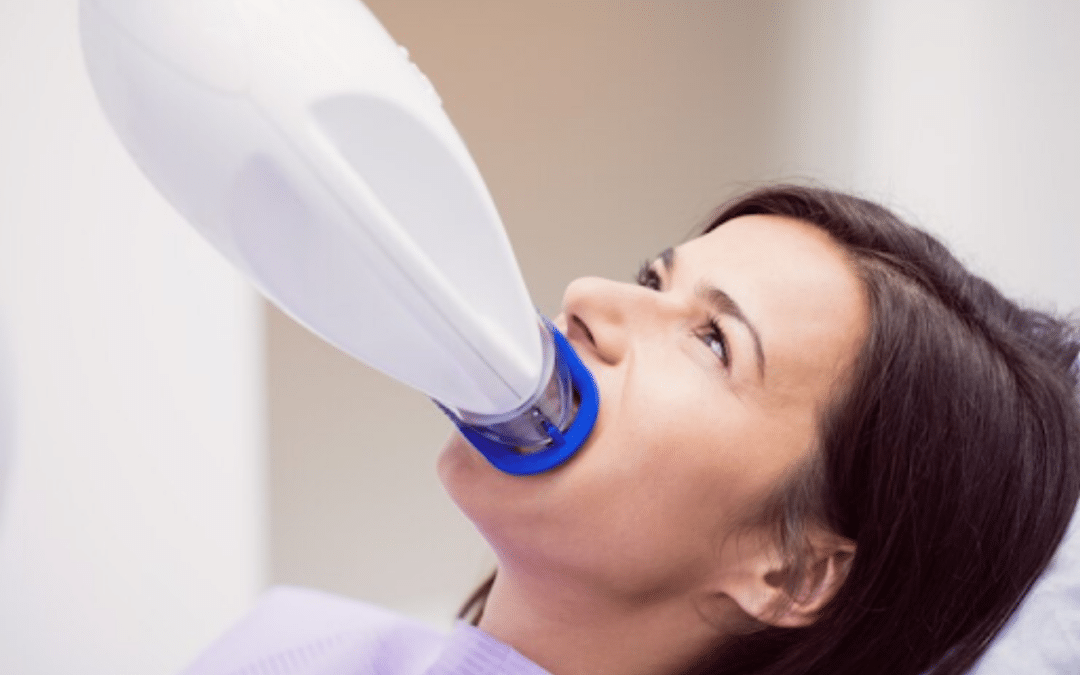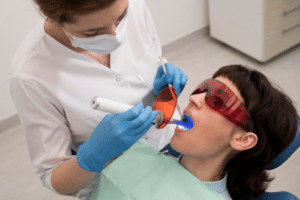Laser dentistry represents a revolutionary shift in the field of dental care. By using focused light beams, dental professionals can perform a variety of procedures with increased precision and efficiency. This modern approach not only enhances the quality of treatments but also improves patient comfort and satisfaction.
In recent years, laser dentistry has gained popularity due to its minimally invasive nature and quick recovery times. Patients experience less pain and bleeding compared to traditional methods, making it a preferred choice for many. Understanding the advantages and applications of laser dentistry can help patients make informed decisions about their oral health care.
What Is Laser Dentistry?
Laser dentistry uses advanced laser technology to perform dental procedures with high precision. Lasers emit focused light beams that can cut, shape, or remove tissue, making dental treatments less invasive.
The Basics of Laser Technology in Dentistry
- Laser Basics: Lasers work by delivering energy in the form of light. This energy can be absorbed by various tissues, allowing for precise and controlled dental procedures.
- Application: Dentists use lasers for both hard and soft tissue procedures, such as cutting teeth and gums or removing decay and lesions.
Types of Lasers Used in Dental Procedures
- Erbium Lasers (Er): Ideal for hard-tissue procedures like cavity preparation and reshaping teeth.
- Diode Lasers: Commonly used for soft tissue procedures, including gum reshaping and treating periodontal disease.
- CO2 Lasers: Effective for both soft tissue surgeries and certain hard tissue applications, providing quick and efficient treatments.
The Key Benefits of Laser Dentistry
Precision and Accuracy
- Enhanced Control: Laser technology allows dentists to target specific areas with high precision, minimizing damage to surrounding tissues.
- Improved Outcomes: The accuracy of lasers ensures better results in procedures like cavity removal, gum contouring, and lesion treatment.
Reduced Pain and Discomfort
- Minimal Invasiveness: Lasers cause less trauma to tissues compared to traditional methods, leading to significantly reduced pain during and after procedures.
- Anesthesia Reduction: Many laser procedures require little to no anesthesia, making treatments more comfortable for patients.
Faster Healing Times
- Quicker Recovery: Laser treatments promote faster tissue regeneration and clotting, leading to quicker recovery times.
- Reduced Inflammation and Infection Risk: Lasers sterilize the area being treated, reducing the likelihood of post-procedure infections and inflammation.
Common Procedures Using Laser Dentistry
Cavity Treatment and Fillings
- Decay Removal: Lasers effectively remove tooth decay with precision, targeting only the affected areas and preserving more of the healthy tooth structure.
- Filling Preparation: After decay removal, lasers prepare the cavity for fillings, ensuring a clean and bacteria-free environment for better bonding.
Gum Disease Treatment
- Scaling and Root Planing: Lasers assist in deep cleaning procedures, effectively removing tartar and plaque from below the gum line.
- Gum Contouring: Lasers reshape gums with high accuracy, improving aesthetics and treating gum disease by removing infected tissue.
Teeth Whitening
- Enhanced Whitening: Lasers activate the whitening agents applied to teeth, accelerating the bleaching process and providing quicker, more noticeable results.
- Minimized Sensitivity: Laser teeth whitening reduces the risk of tooth sensitivity, making the procedure more comfortable for patients.
Comparison with Traditional Dental Methods
Efficiency and Effectiveness
- Laser Dentistry: Provides greater precision, targeting specific areas without damaging surrounding tissues. Procedures are often faster, reducing chair time.
- Traditional Methods: Typically involve mechanical tools that can be less precise and may remove more healthy tissue, increasing procedure time.
Patient Experience
- Laser Dentistry: Often results in less pain and discomfort during and after procedures. Many patients experience less anxiety due to the non-invasive nature and reduced need for anesthesia.
- Traditional Methods: Can cause more pain and discomfort, both during and after the procedure. The noise and vibration of drills often increase patient anxiety.
Long-term Outcomes
- Laser Dentistry: Promotes faster healing and reduces the risk of infection due to its sterilizing effect. Patients often see better long-term results with less scarring and healthier tissue regeneration.
- Traditional Methods: Healing can take longer, with a higher risk of infection. Procedures may result in more scar tissue and potentially less optimal long-term outcomes.
Safety and Side Effects
Safety Measures in Laser Dentistry
- Eye Protection: Both patients and dental professionals wear specialized glasses to protect their eyes from laser light.
- Controlled Settings: Lasers used in dentistry operate at specific wavelengths and power levels, ensuring precise and safe procedures.
- Sterilization: Lasers sterilize the area they treat, reducing the risk of infection and promoting quicker healing.
Potential Risks and How They Are Managed
- Tissue Damage: Although rare, excessive exposure to laser energy can cause tissue damage. Dentists receive extensive training to use lasers safely and effectively, minimizing this risk.
- Discomfort: Some patients may feel mild discomfort, but this is typically less than with traditional methods. Dentists can adjust laser intensity to ensure patient comfort.
Laser dentistry represents a significant advancement in dental technology, offering precision, reduced pain, and faster healing. By incorporating lasers into various treatments, dentists can provide a more comfortable and efficient experience for patients. As technology continues to evolve, the benefits of laser dentistry will likely expand, further solidifying its role as a game-changer in dental care.


